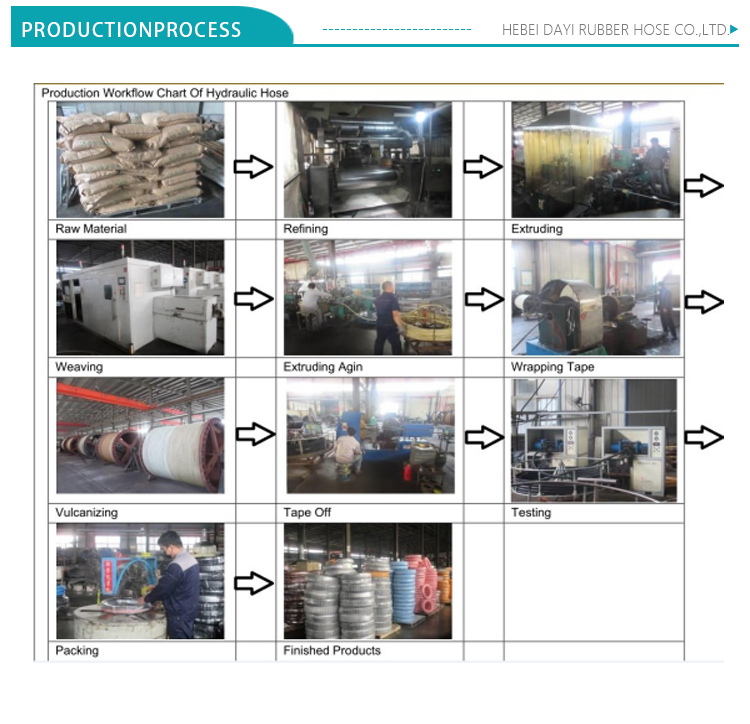335345435
Nov . 18, 2024 21:57 Back to list
Thermoplastic Hydraulic Hoses for Enhanced Durability and Performance in Industrial Applications
The Advancements and Applications of Thermoplastic Hydraulic Hoses
In recent years, thermoplastic hydraulic hoses have emerged as a significant advancement in fluid transfer technology, delivering enhanced performance and versatility across various industries. Unlike traditional rubber hoses, thermoplastic hoses are made from synthetic materials, providing a host of advantages that meet the demanding needs of modern hydraulic systems.
One of the primary benefits of thermoplastic hydraulic hoses is their lightweight construction
. These hoses are substantially lighter than rubber alternatives, reducing the overall weight of hydraulic systems. This weight reduction is particularly advantageous in mobile applications, such as construction machinery, agricultural equipment, and marine vessels, where mobility and efficiency are paramount.Durability is another critical attribute of thermoplastic hoses. They exhibit superior resistance to abrasion, chemicals, and extreme temperatures, allowing them to perform effectively in harsh operating environments. This resilience means fewer replacements and less downtime, ultimately leading to cost savings for businesses that rely on hydraulic systems for their operations. Furthermore, thermoplastic hoses are less susceptible to cracking and aging, which enhances their longevity and reliability.
Thermoplastic hoses also offer excellent flexibility and bend radius characteristics. This flexibility allows for easier routing in complex systems, making installation simpler and reducing the risk of kinking, which can lead to premature failure. Consequently, engineers and technicians can design hydraulic systems with more freedom, optimizing space and enhancing overall system efficiency.
thermoplastic hydraulic hose

In addition to their physical properties, thermoplastic hydraulic hoses contribute to environmental sustainability. Many thermoplastic materials are recyclable, marking a significant advantage in today's eco-conscious market. Using recyclable materials can help companies reduce their carbon footprint and align with sustainability goals.
The applications of thermoplastic hydraulic hoses are diverse and continually expanding. They are utilized in various sectors, including automotive, construction, agriculture, mining, and aerospace. In the automotive industry, for example, these hoses are often used in fuel transfer, air conditioning, and hydraulic systems due to their lightweight nature and durability. Likewise, in construction and agriculture, they are crucial for powering hydraulic machinery that lifts, digs, and moves heavy loads.
Moreover, innovation in thermoplastic materials and manufacturing processes continues to drive the development of advanced hydraulic hoses. Manufacturers are constantly working to enhance the performance attributes of these hoses, leading to products tailored for specific industry needs, such as high-pressure applications or specialized chemical resistance.
In conclusion, thermoplastic hydraulic hoses represent a significant leap forward in hydraulic technology, offering a combination of lightweight, durability, flexibility, and environmental benefits. As industries evolve and demand for efficient, reliable fluid transfer solutions grows, thermoplastic hoses are set to play an increasingly vital role in hydraulic applications across the globe. Their adaptability and performance capabilities not only enhance operational efficiency but also pave the way for more sustainable practices in various industrial sectors.
-
SAE 100 R17 Black Smooth Cover Hydraulic Hose
NewsMar.07,2025
-
SAE 100 R17 Black Smooth Cover Hydraulic Hose
NewsMar.07,2025
-
SAE 100 R17 Black Smooth Cover Hydraulic Hose
NewsMar.07,2025
-
SAE 100 R17 Black Smooth Cover Hydraulic Hose
NewsMar.07,2025
-
SAE 100 R17 Black Smooth Cover Hydraulic Hose
NewsMar.07,2025
-
steel wire braided hydraulic hose
NewsMar.07,2025



